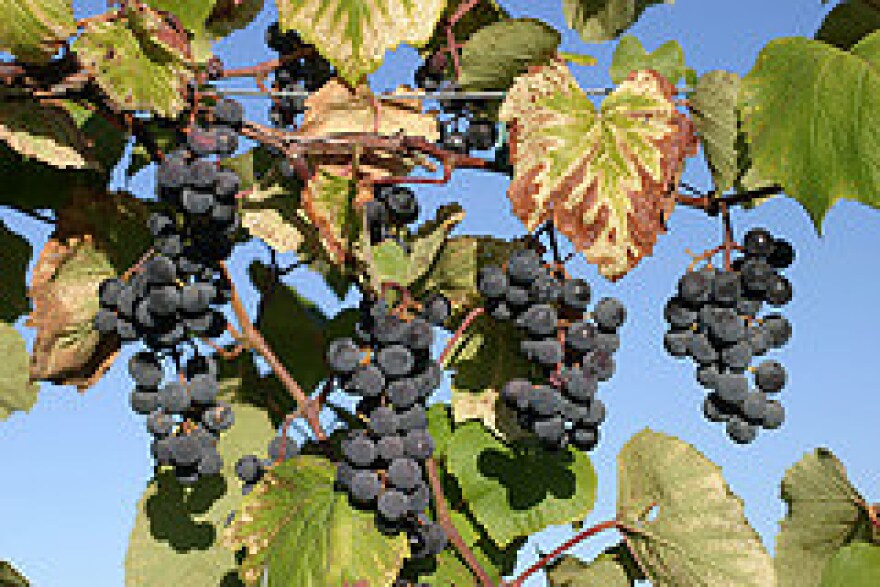When you think of grapes in the Northwest, wine is probably the first thing that comes to mind. But Concord juice grapes actually are Washington’s most widely planted grape. It turns out, juice grapes are more susceptible to warming weather than their wine grape cousins.
The sun beats down as researcher Markus Keller leans in to inspect his experimental concord grape vineyard.
Keller: “As you can see here, there’s a lot of flowers forming on the different shoots.”
The grape leaves hang down like a curtain over the rows of vines. This year’s crop looks to be strong.
Keller: “Ninety–plus percent of our juice grapes is just one single variety. It’s Concord.”
Turns out, Concord grapes – first cultivated in the Massachusetts village of Concord – flourish in Washington’s climate east of the Cascades.
But that climate is changing. Summers may get too warm for these grapes, used to make juice and jelly. Keller studies viticulture at Washington State University. He’s been looking into ways to continue growing juice grapes a warming climate.
Central Washington has experienced a warming trend over about the last 30 years. That’s according to data from the National Climate Data Center. Scientists expect that trend to continue.
Keller: “I think that in 50 years, maybe 40, we will have not much left of our juice grape industry.”
Keller says juice grape growers could plant crops at higher elevations where temperatures would be cooler.
Craig Bardwell is with the National Grape Co-op in Grandview, Washington. He says the main problem with summers that are too hot:

Bardwell: “Color. And color is a very important part of the juice.”
People want their grape juice to be purple. That’s what you picture at the breakfast table.
Too much heat means grapes stay greener.
Bardwell: “And that does decrease our color intensity. And there’s not really anything we can do about that.”
Juice grapes also use 2 to 3 times the amount of water as wine grapes. That’s because they have a much larger canopy of leaves and are more heavily irrigated.
Researchers are trying to figure out how little water the grapes can get by on. Too little water, and they vines don’t produce as many grapes.
As far as the heat problem is concerned: Keller is experimenting with a new juice grape variety called sunbelt.
Keller: “That’s a seedling of concord. We don’t know what the other parent is. It’s kind of an illegitimate child.”
The sunbelt variety is from Arkansas. Like its name suggests, it handles heat well. But it doesn’t produce the same large crops as concord grapes. Right now Washington grows about half the nation’s concord juice grapes.

One idea: to stagger rows of sunbelt grape vines with rows of concord vines.
And maybe a way to save the juice grape crop.
Keller: “People talk about the wine all the time and forget that concord is our most widely planted variety, still.”
Keller says that’s why it’s important to find a solution before things get too hot.
Copyright 2014 Earthfix.




